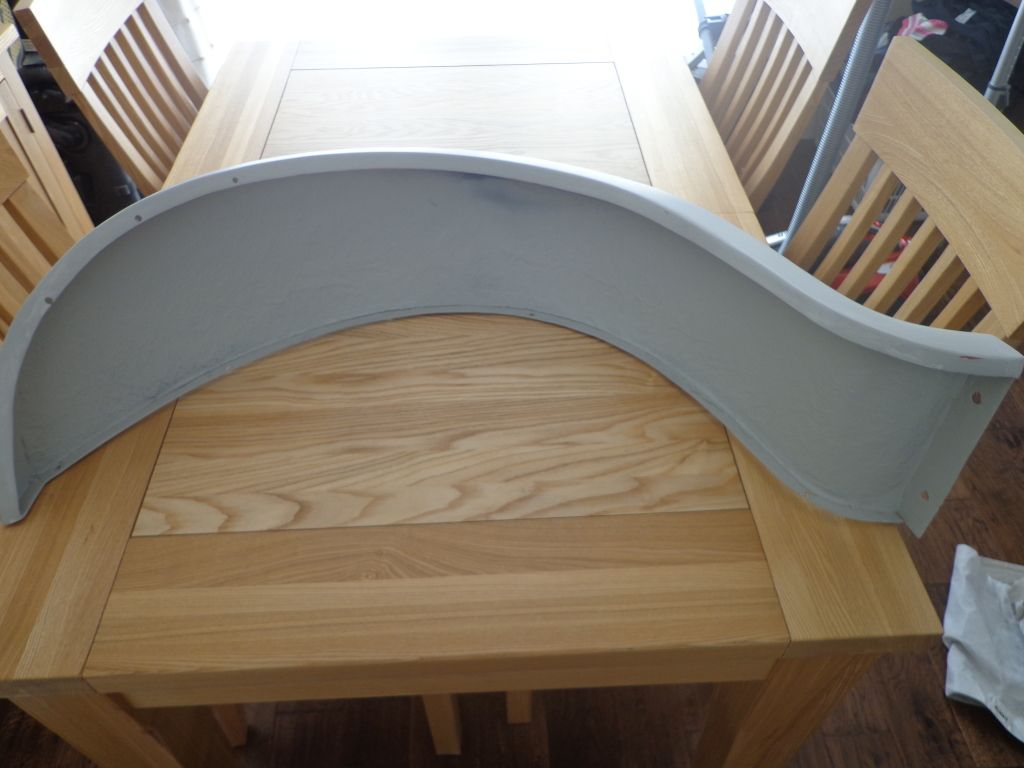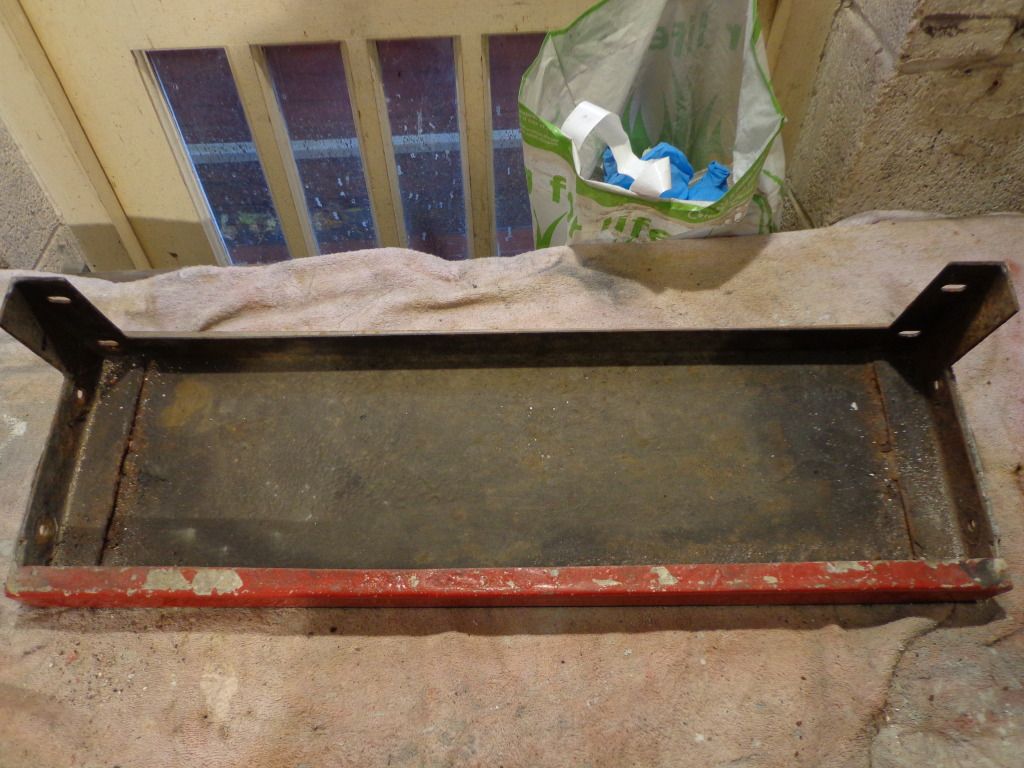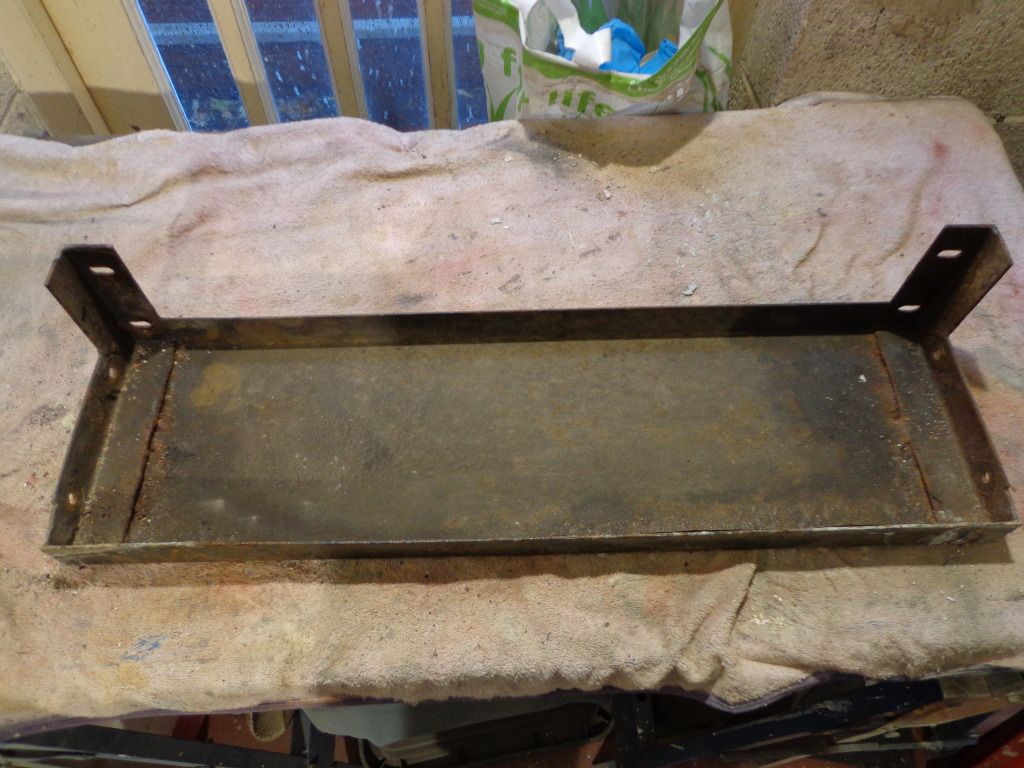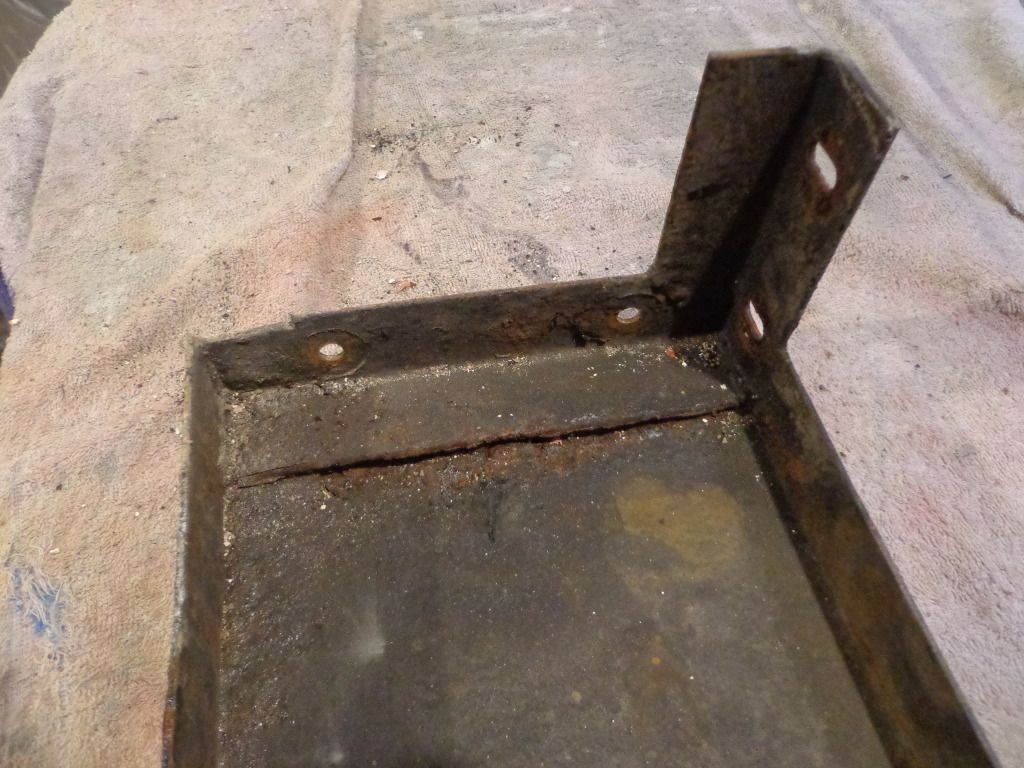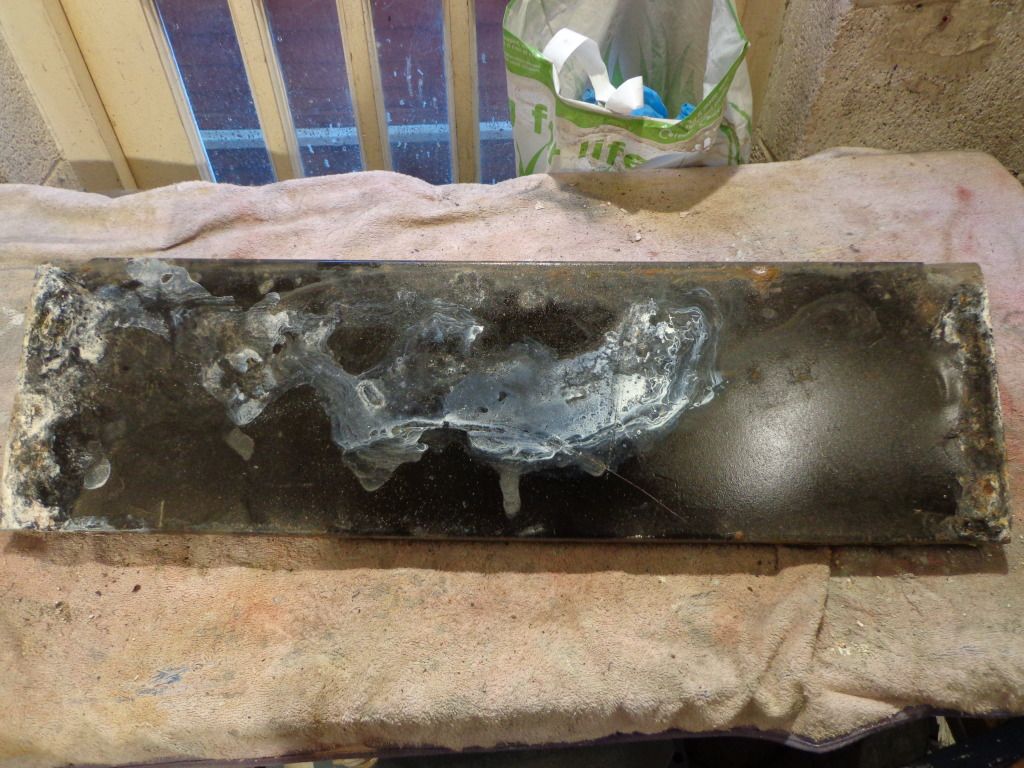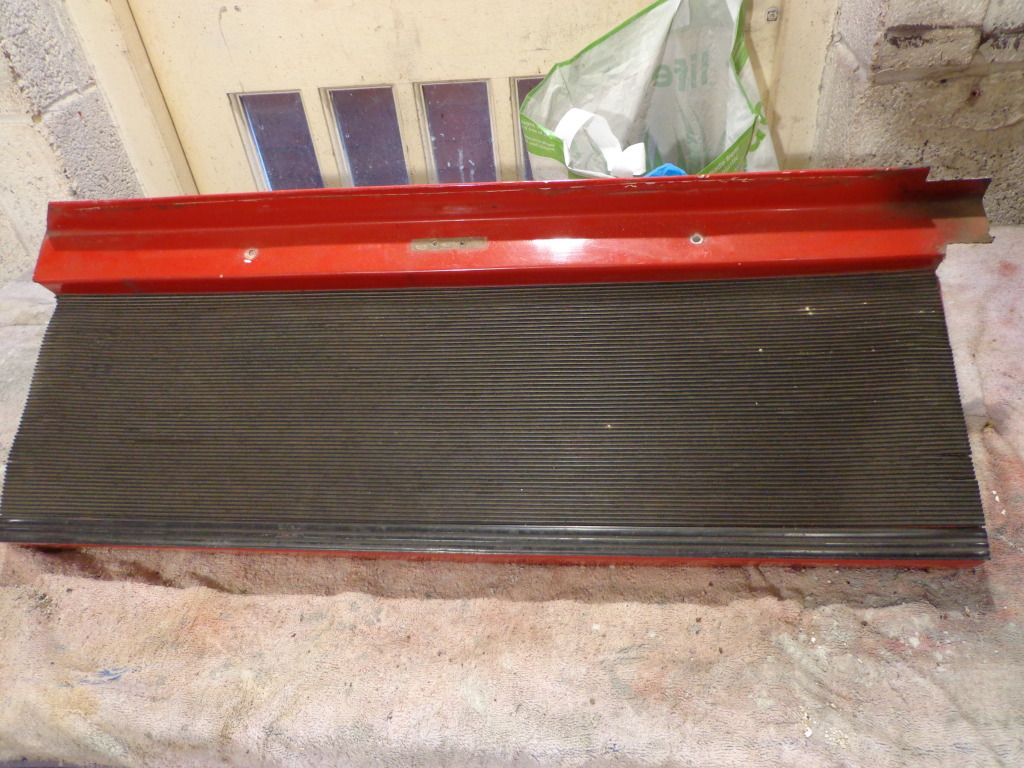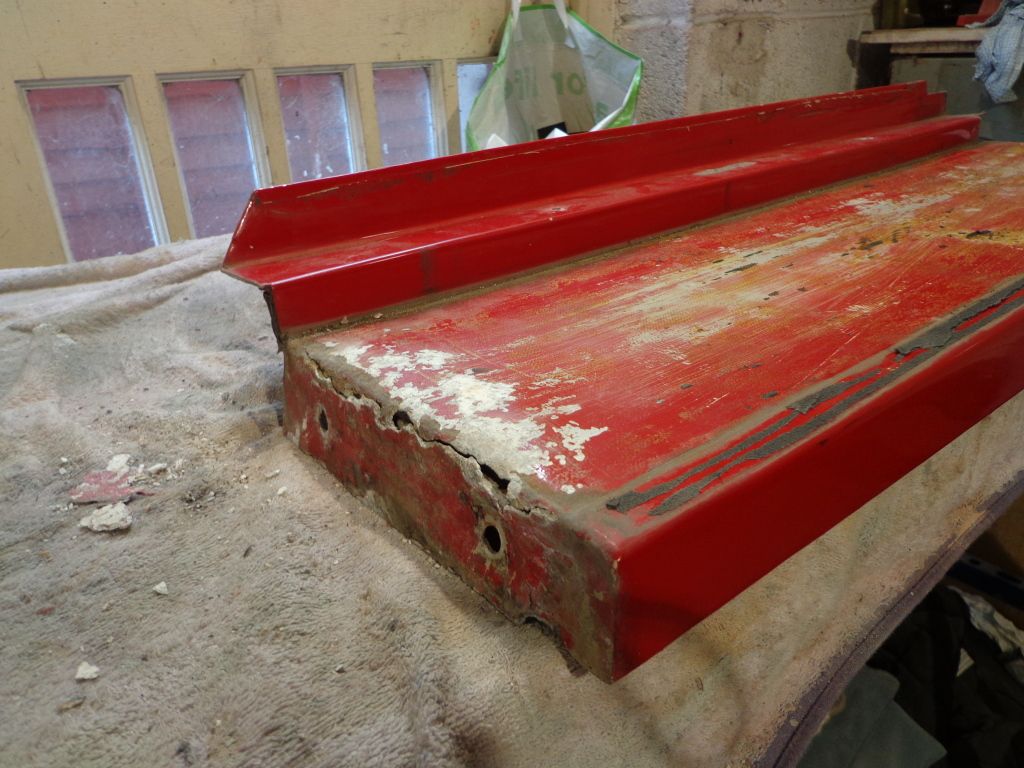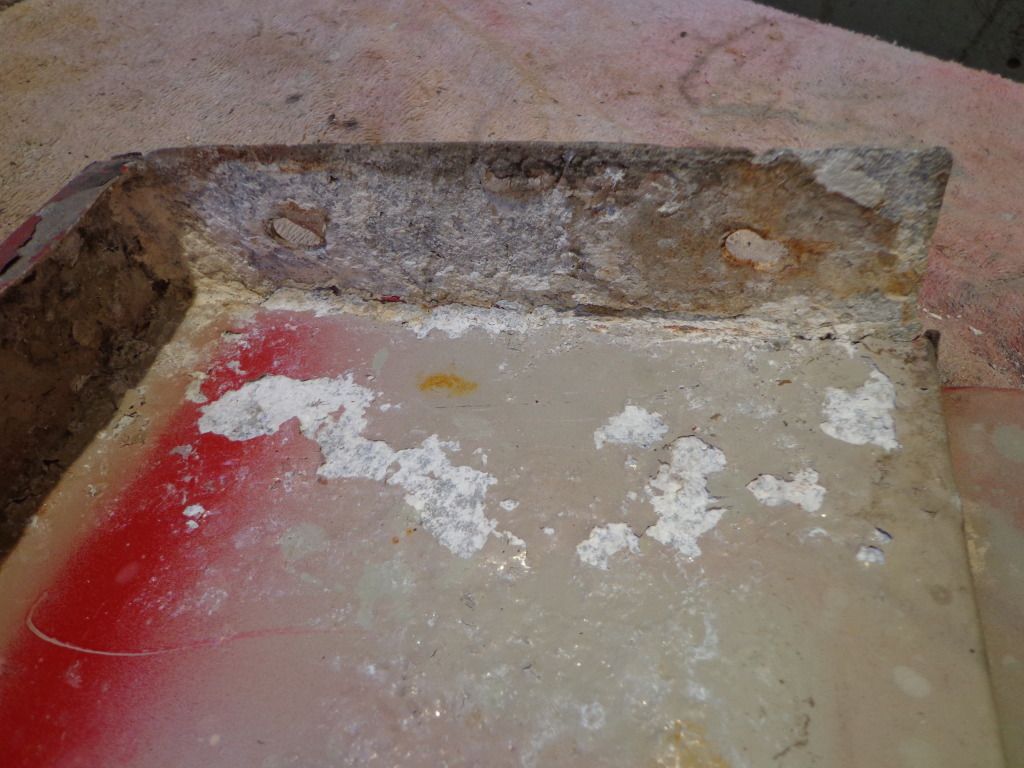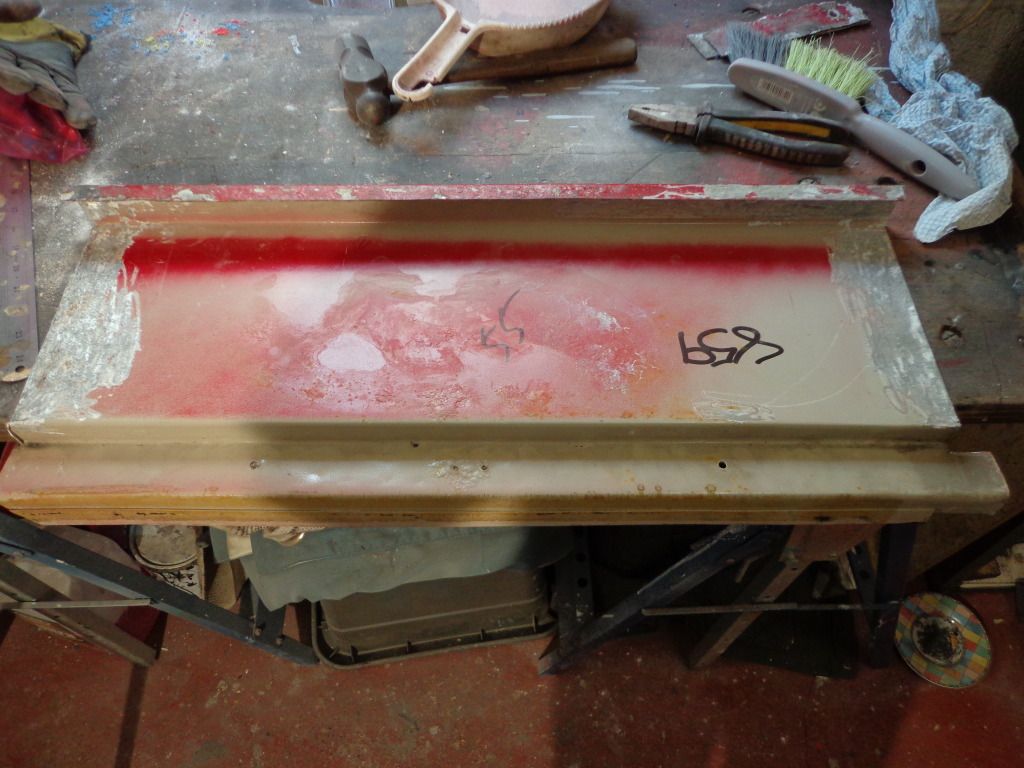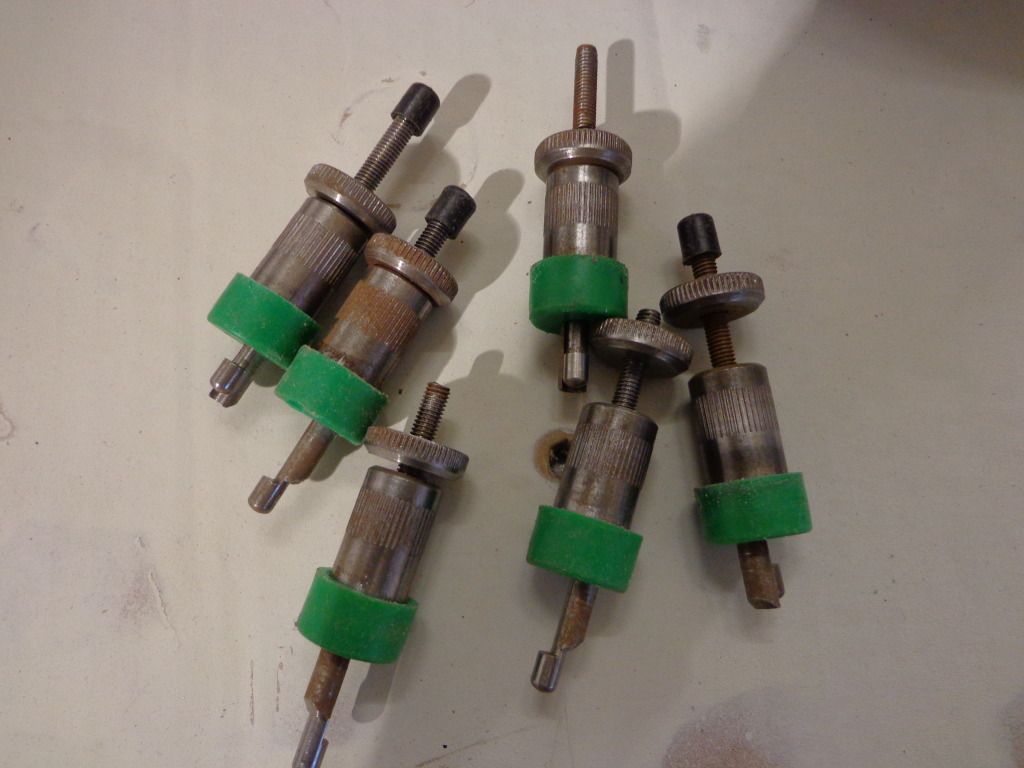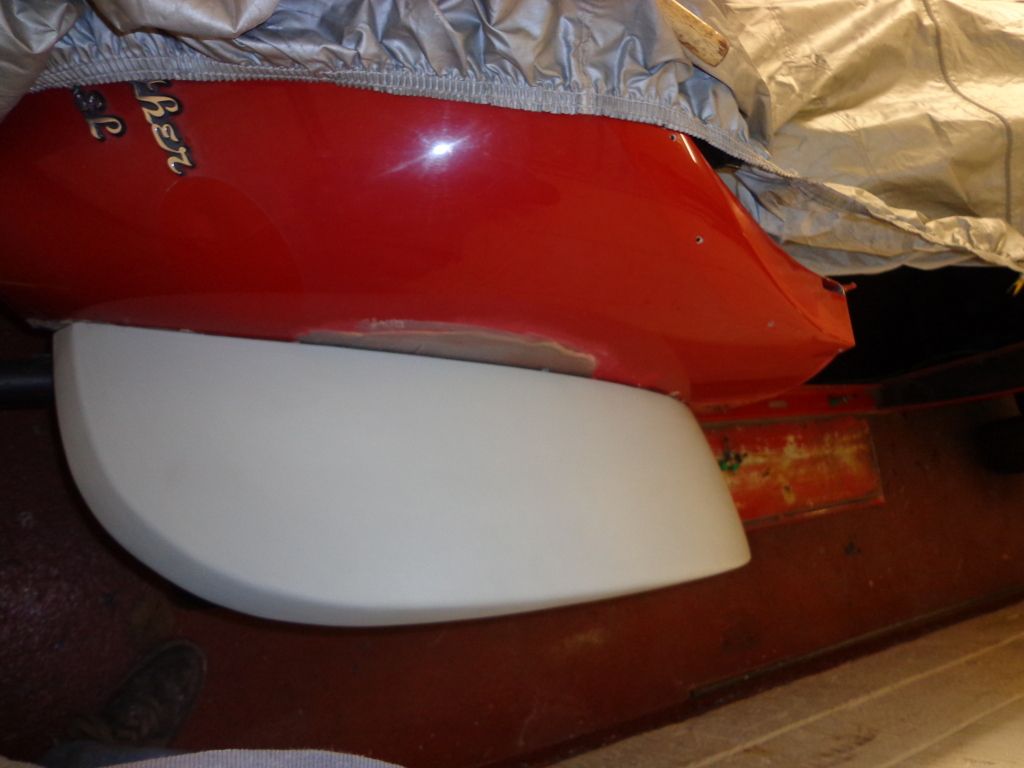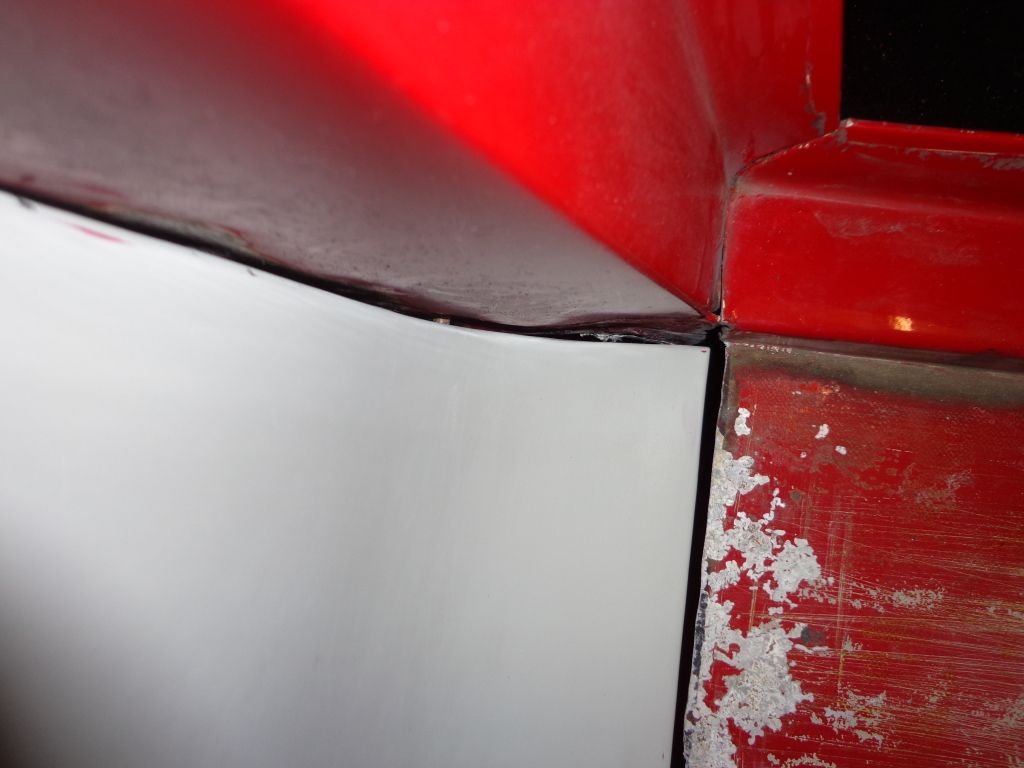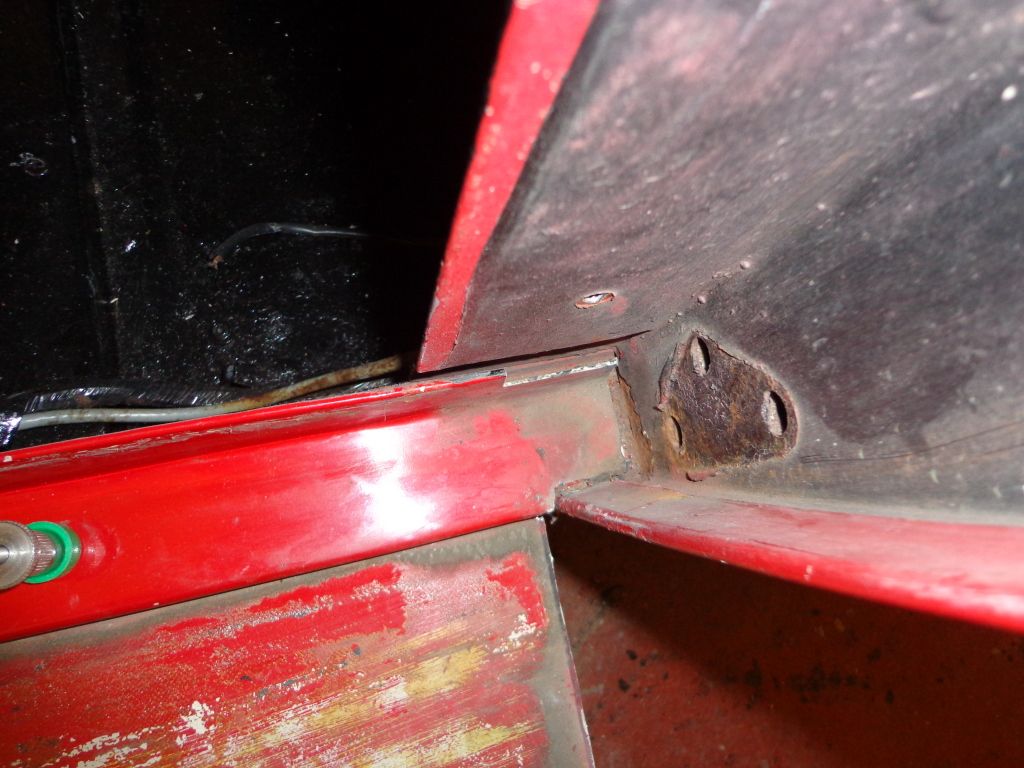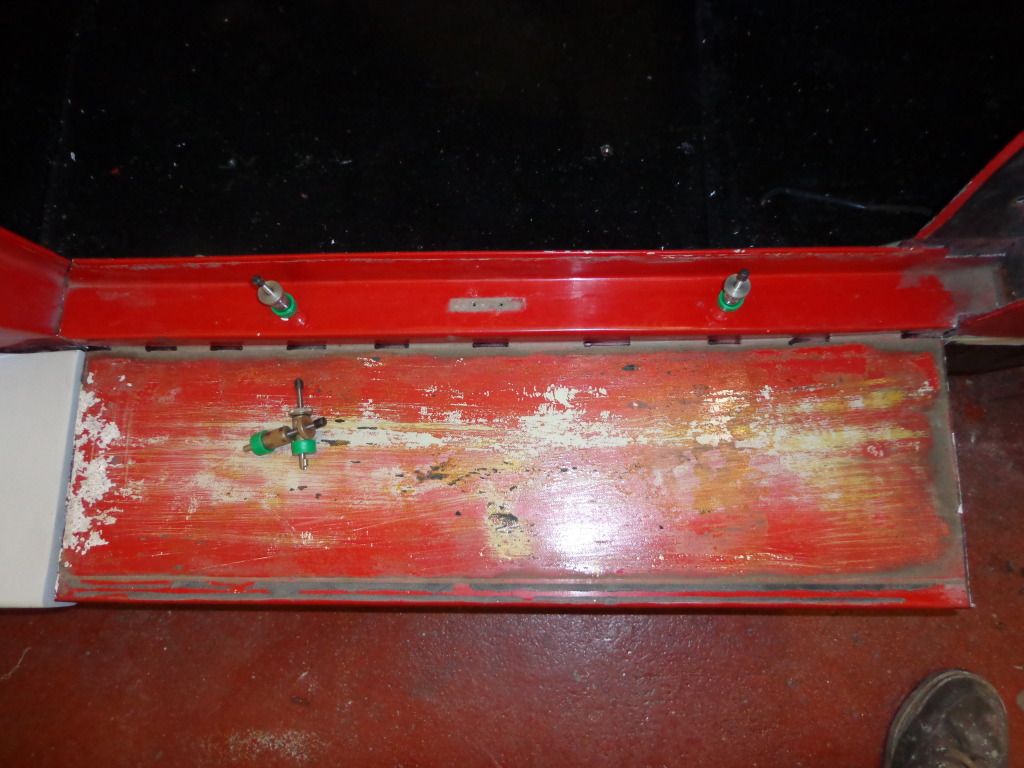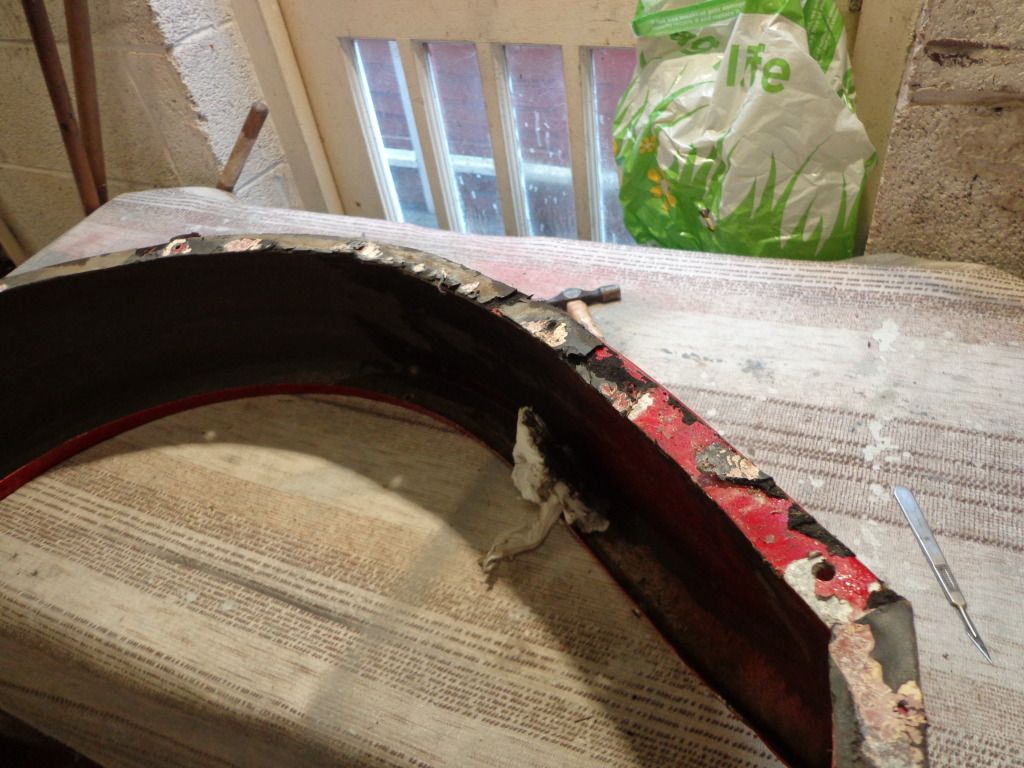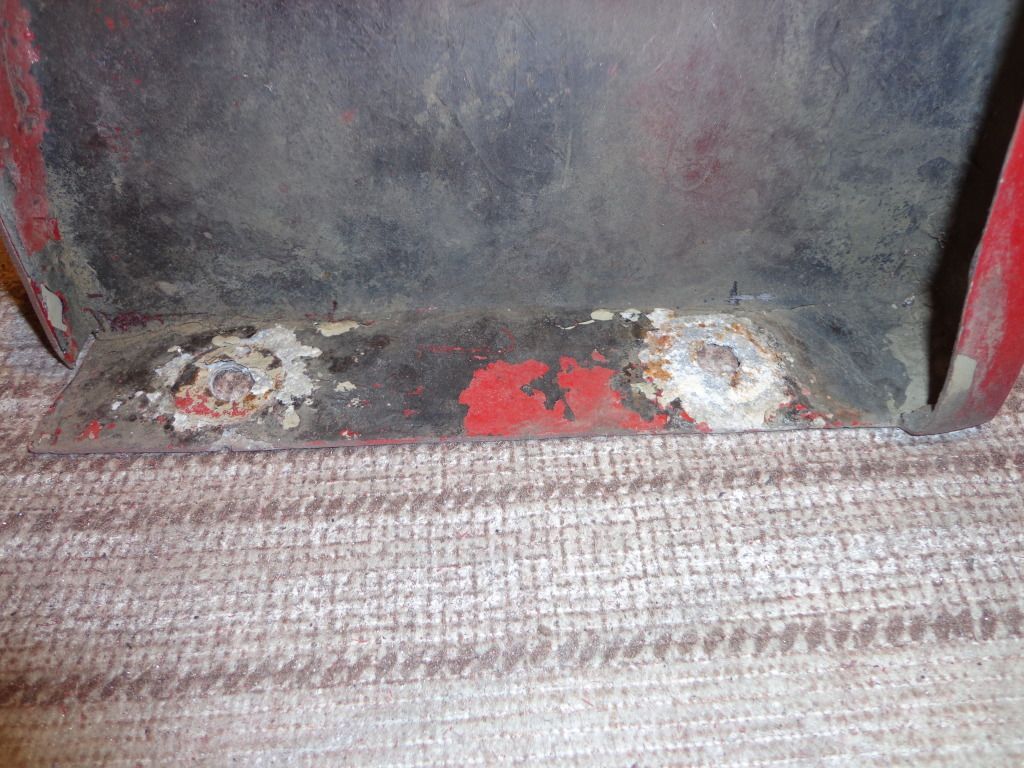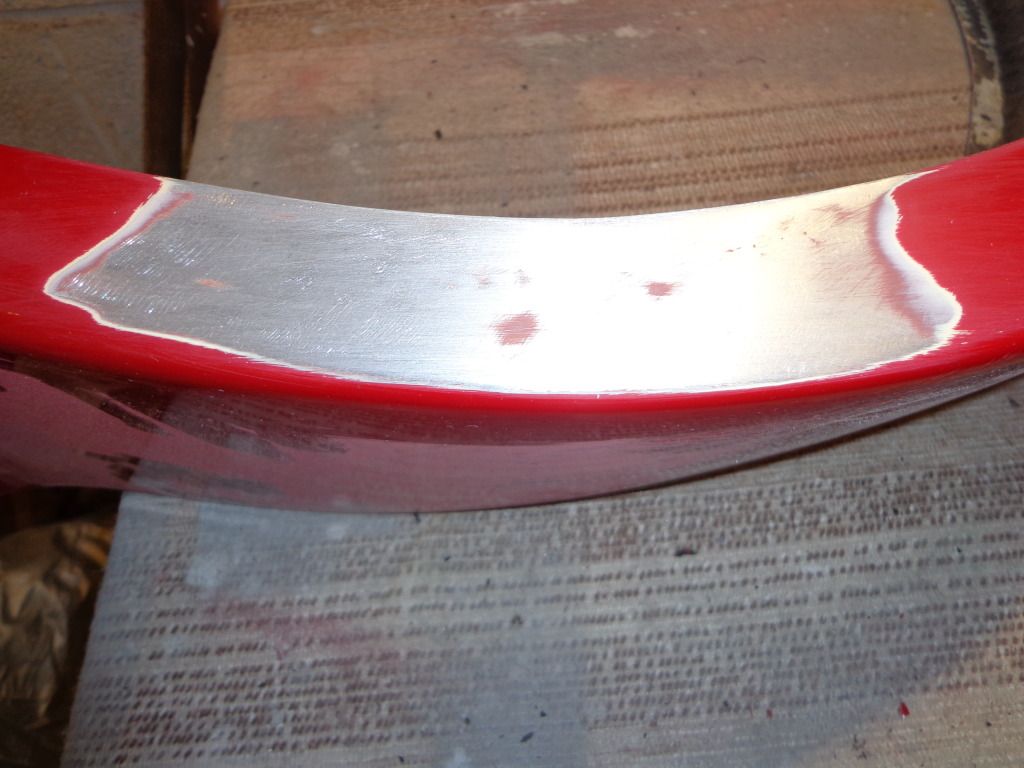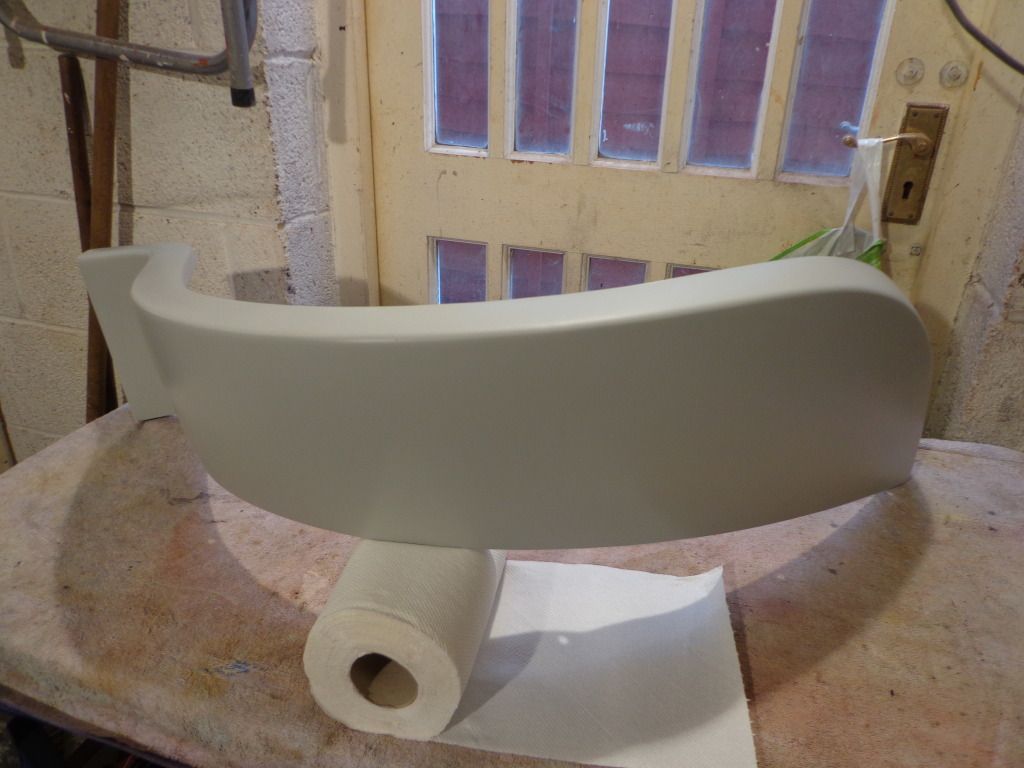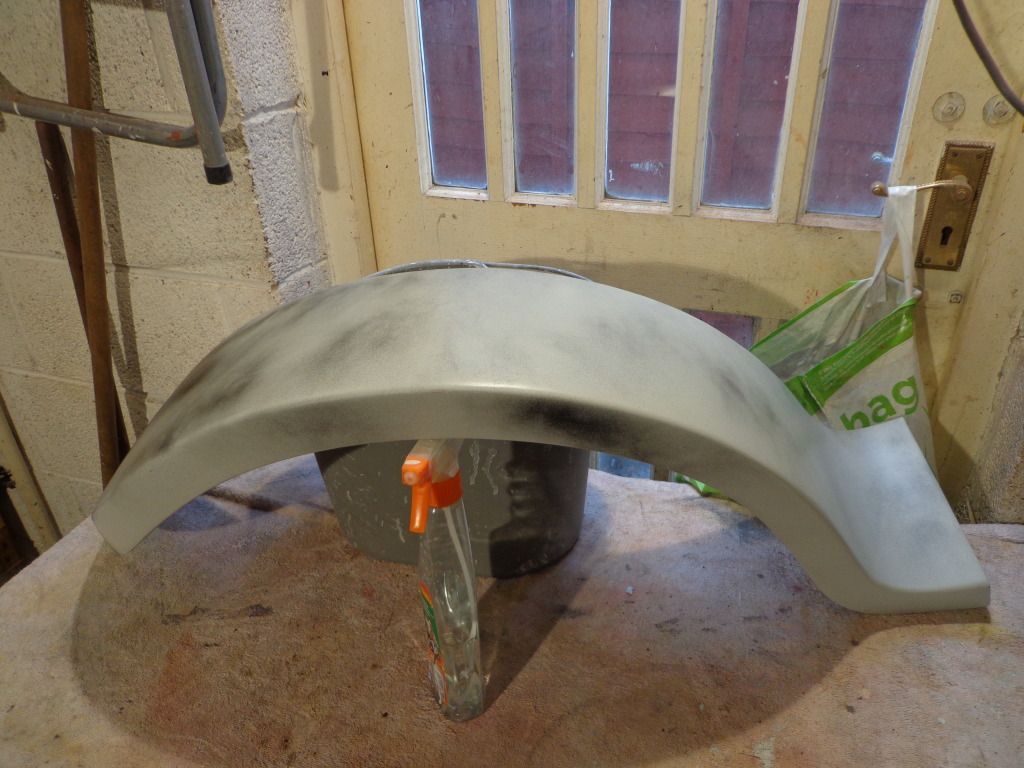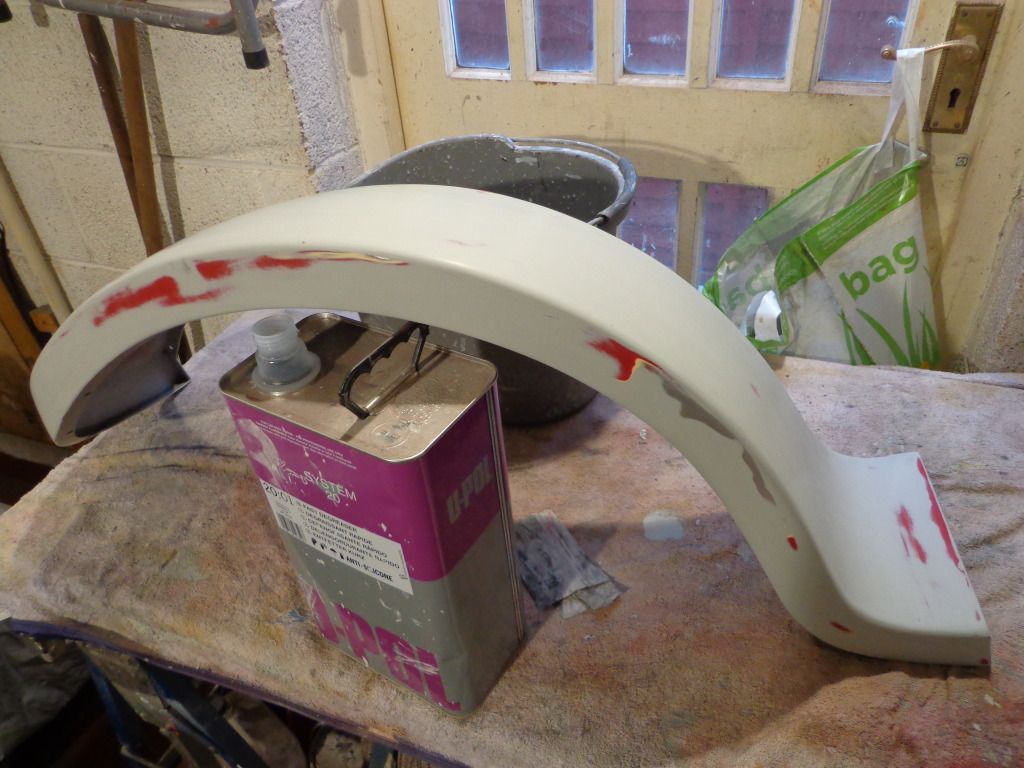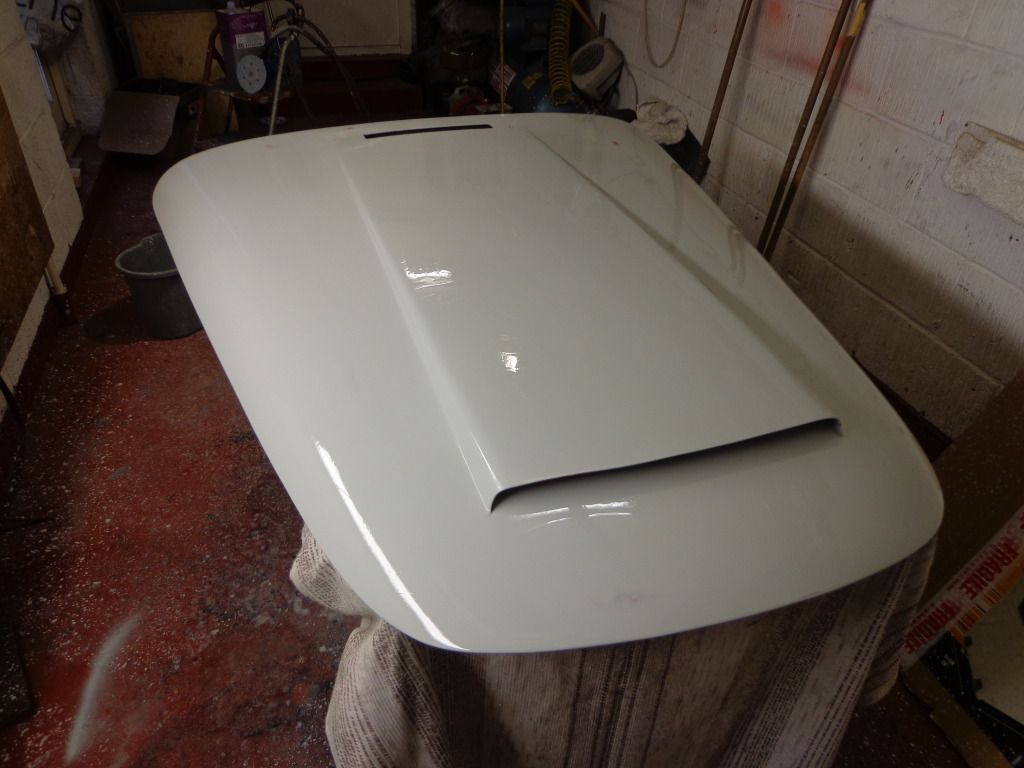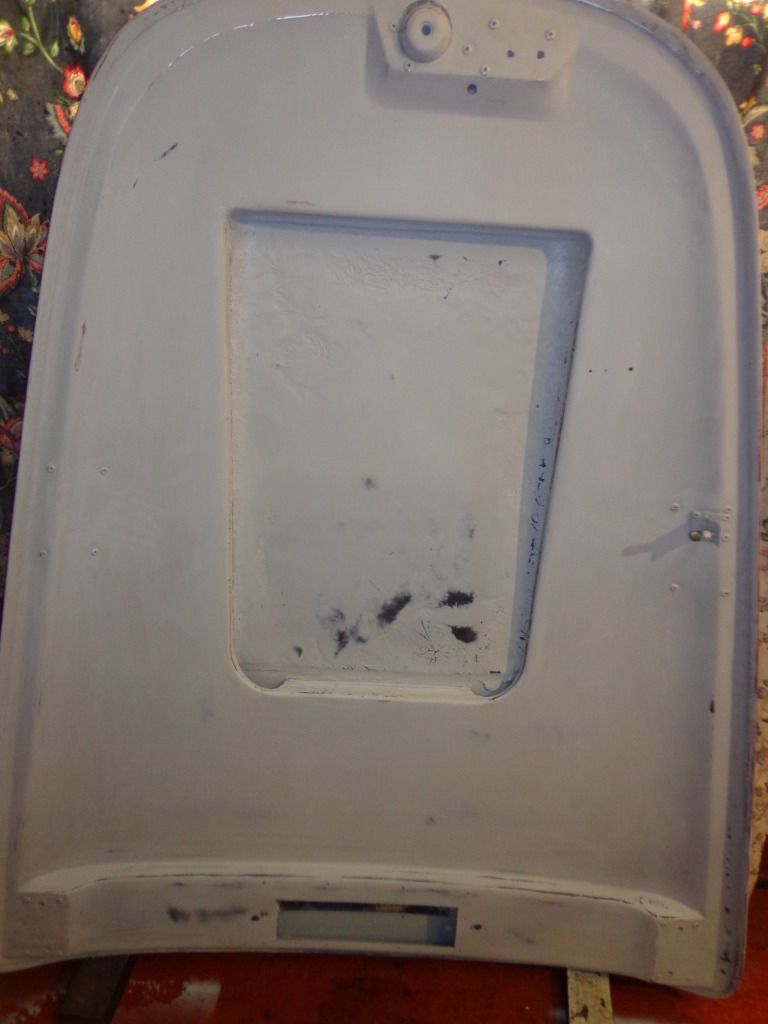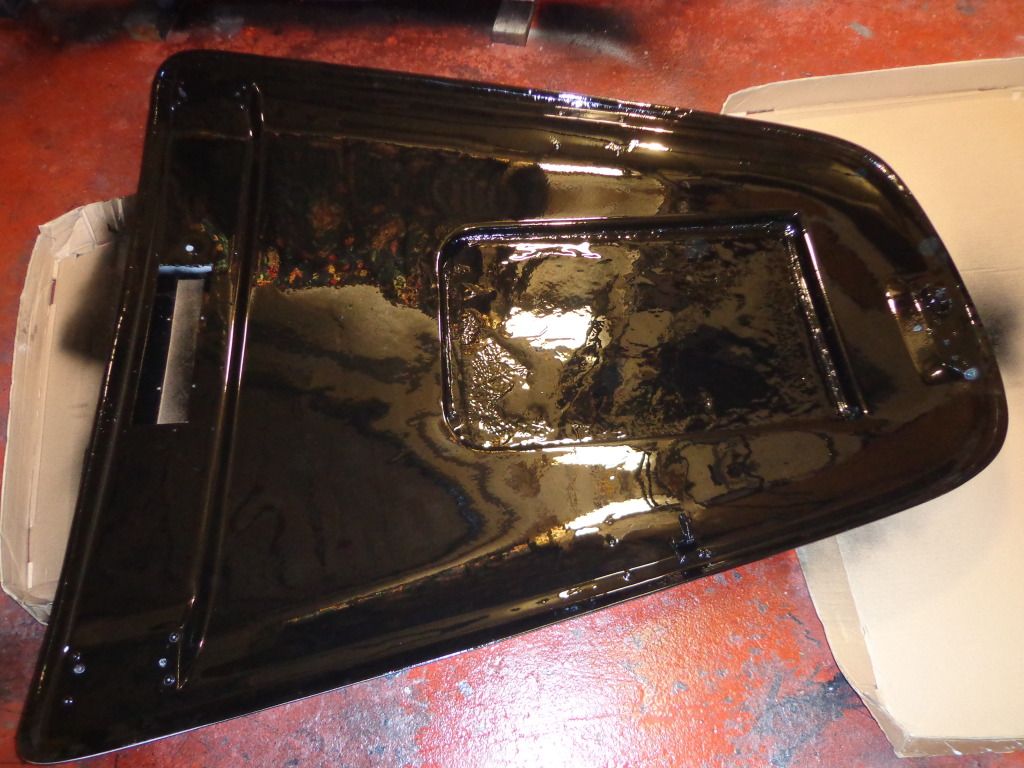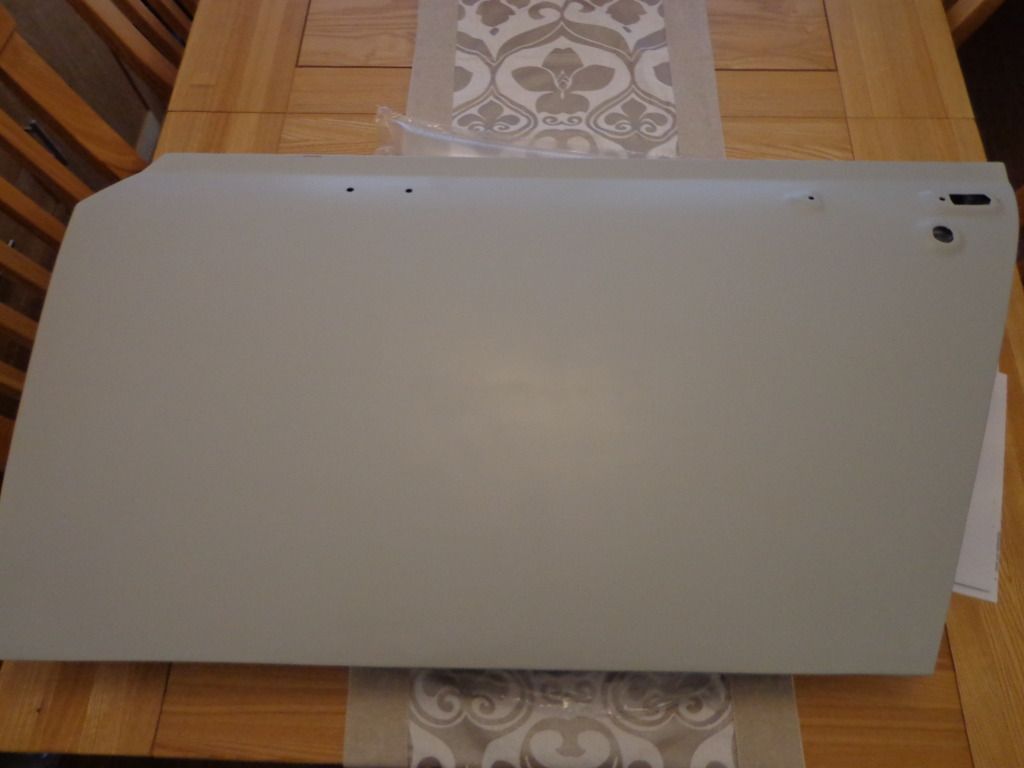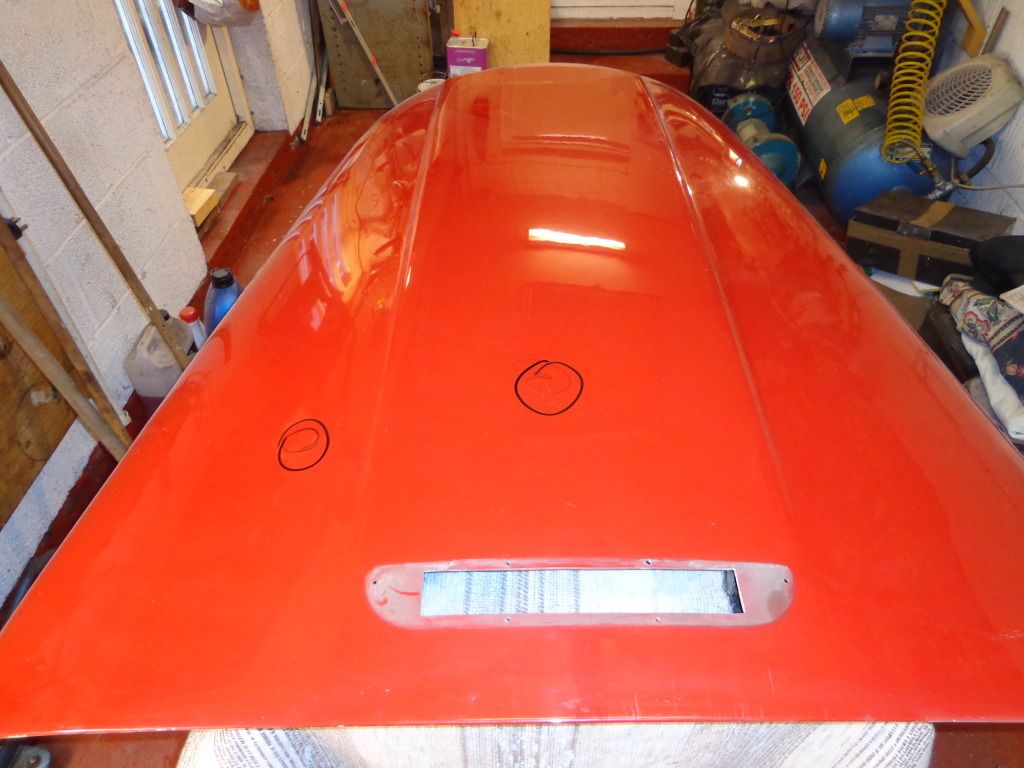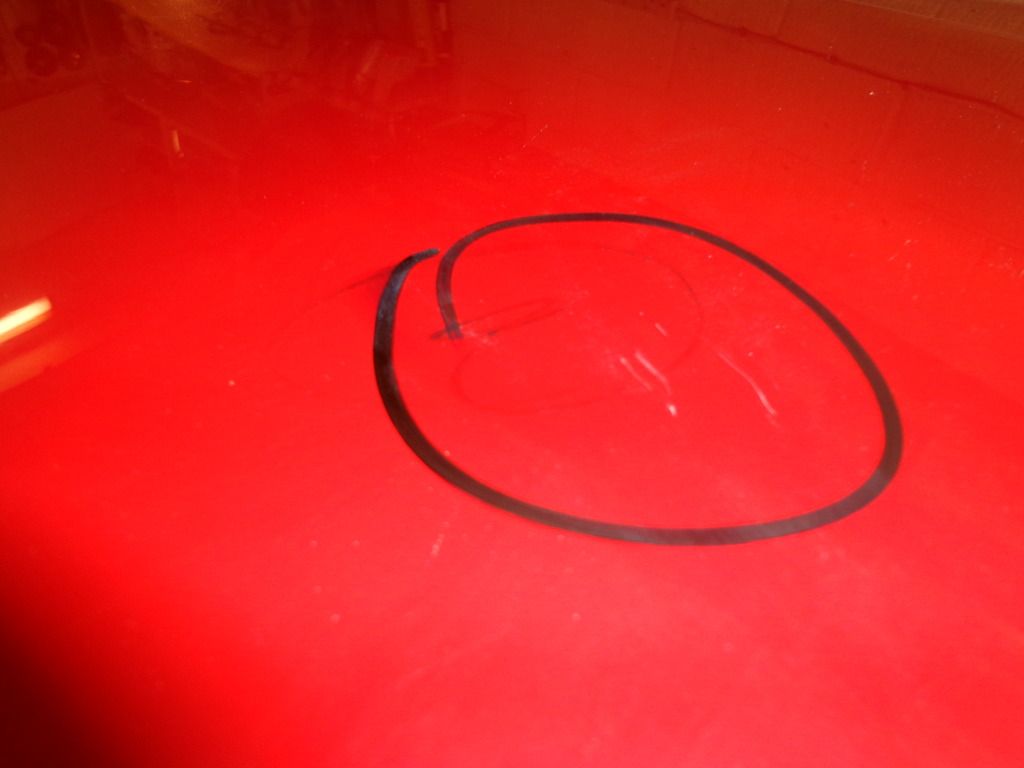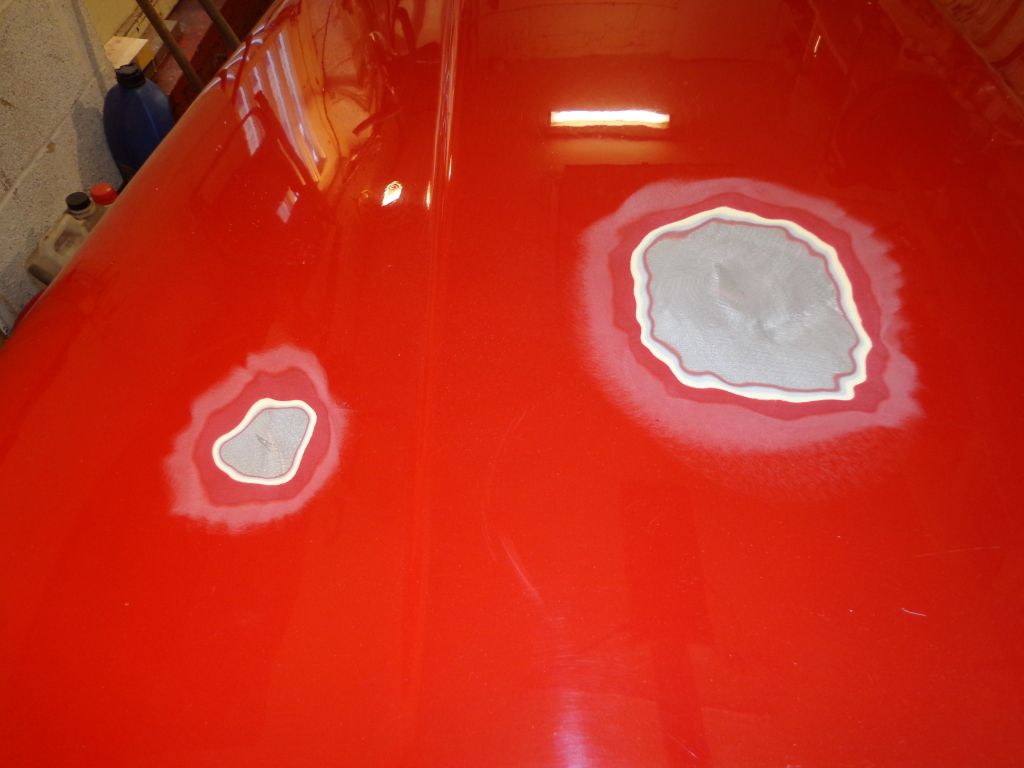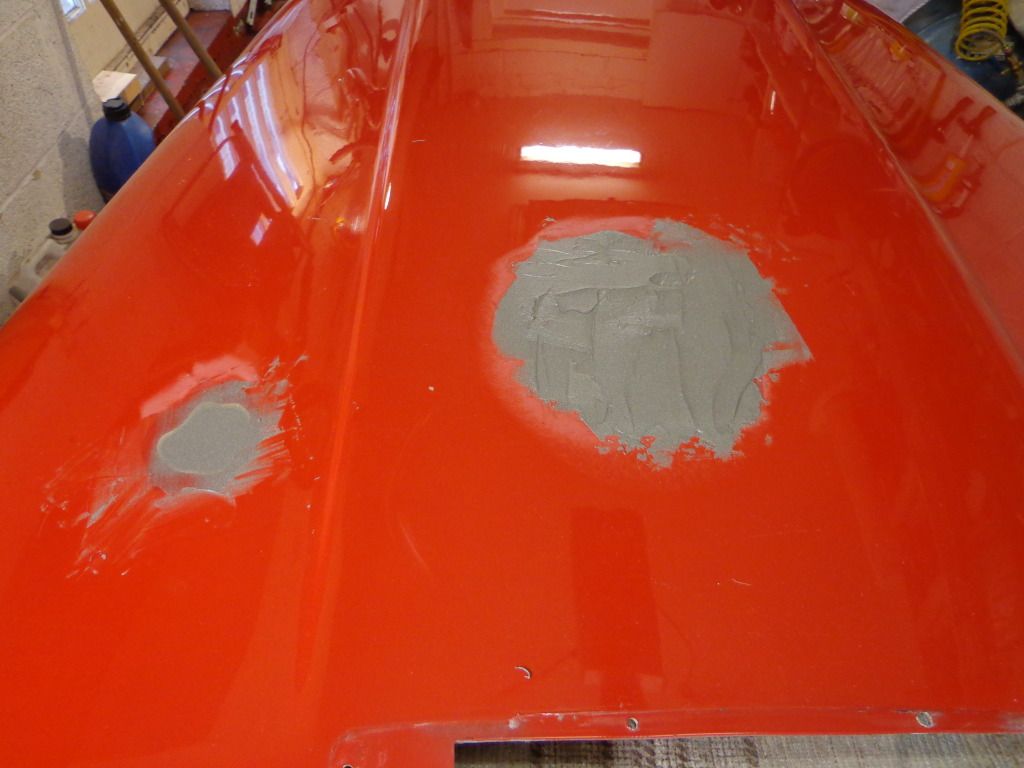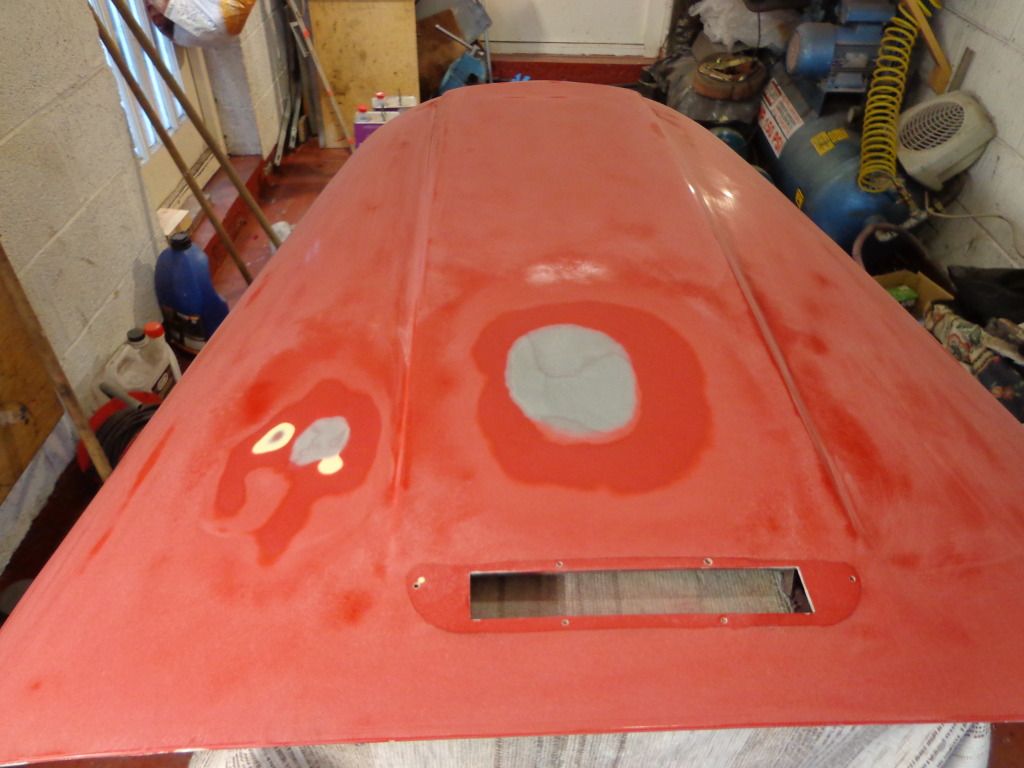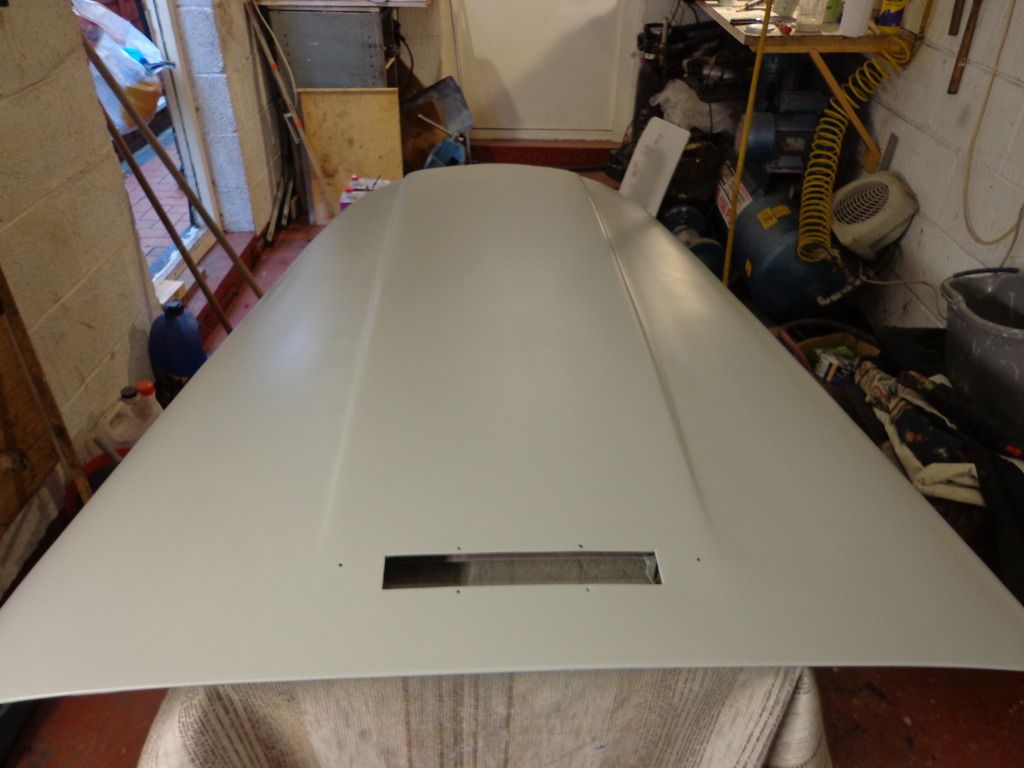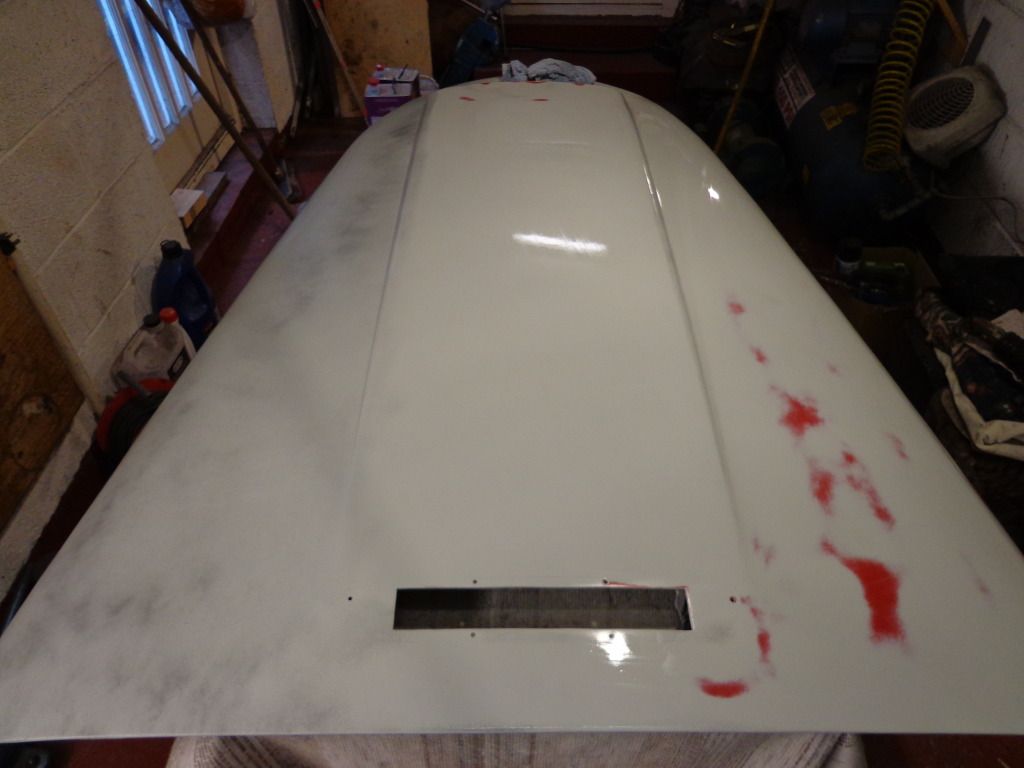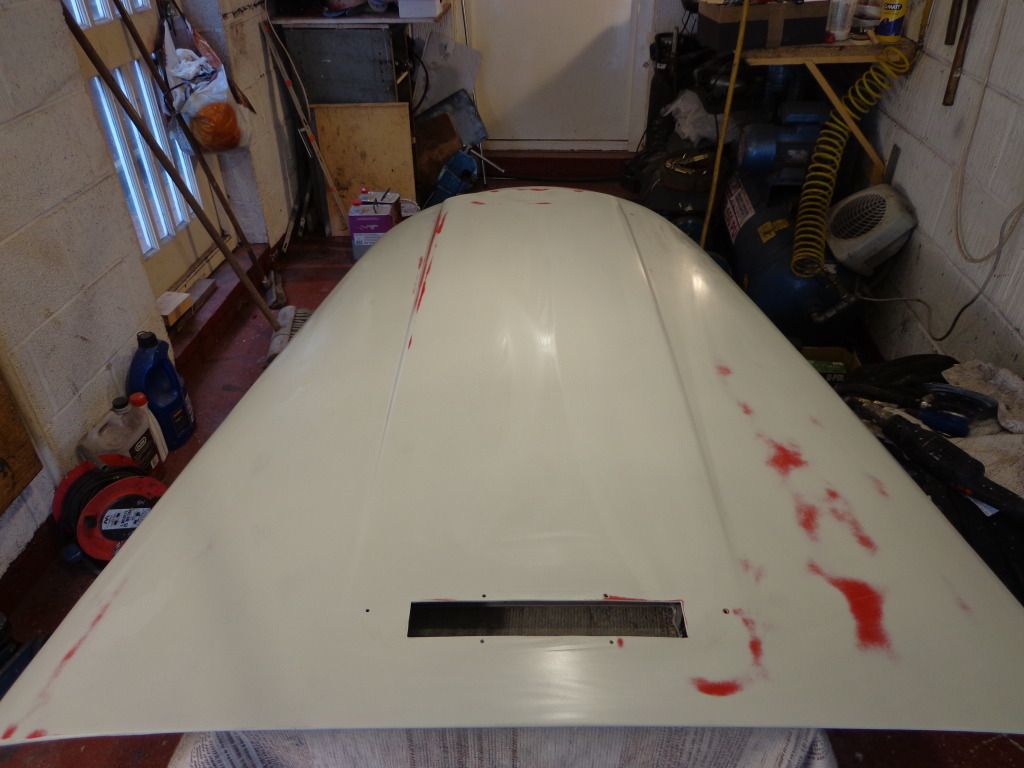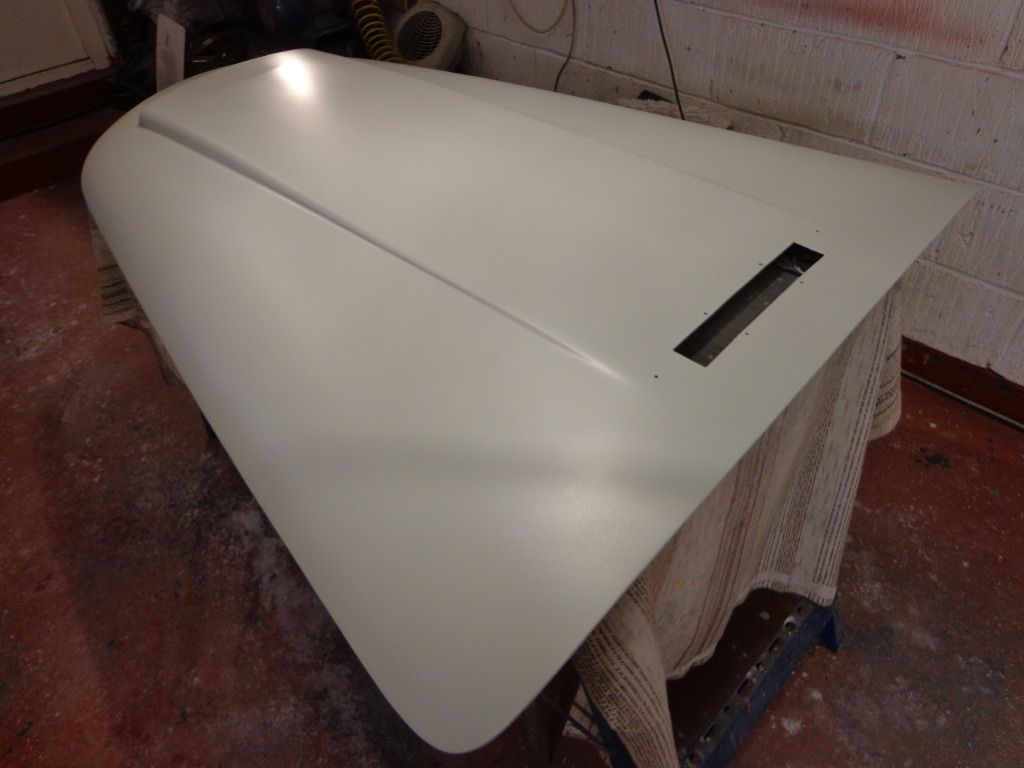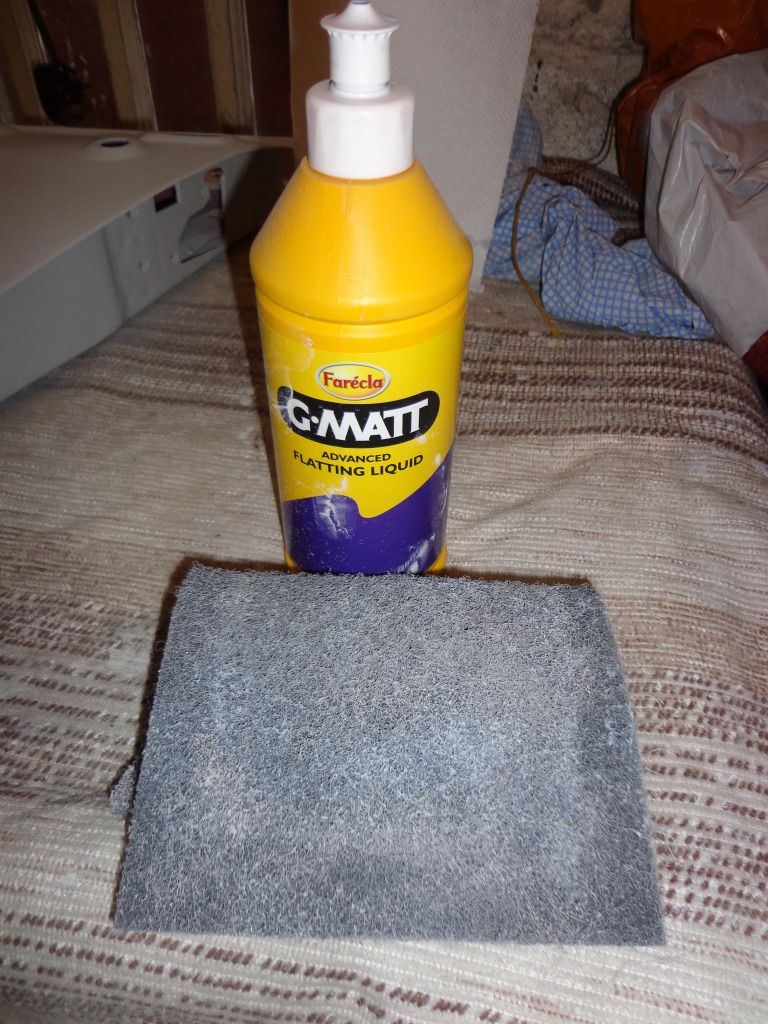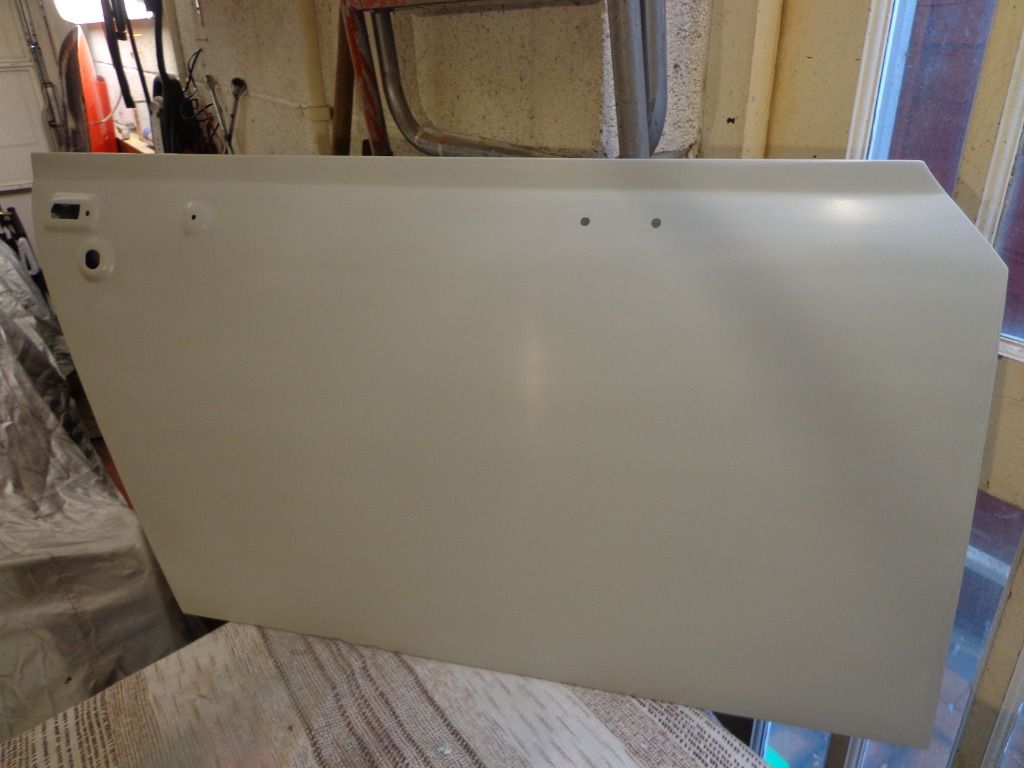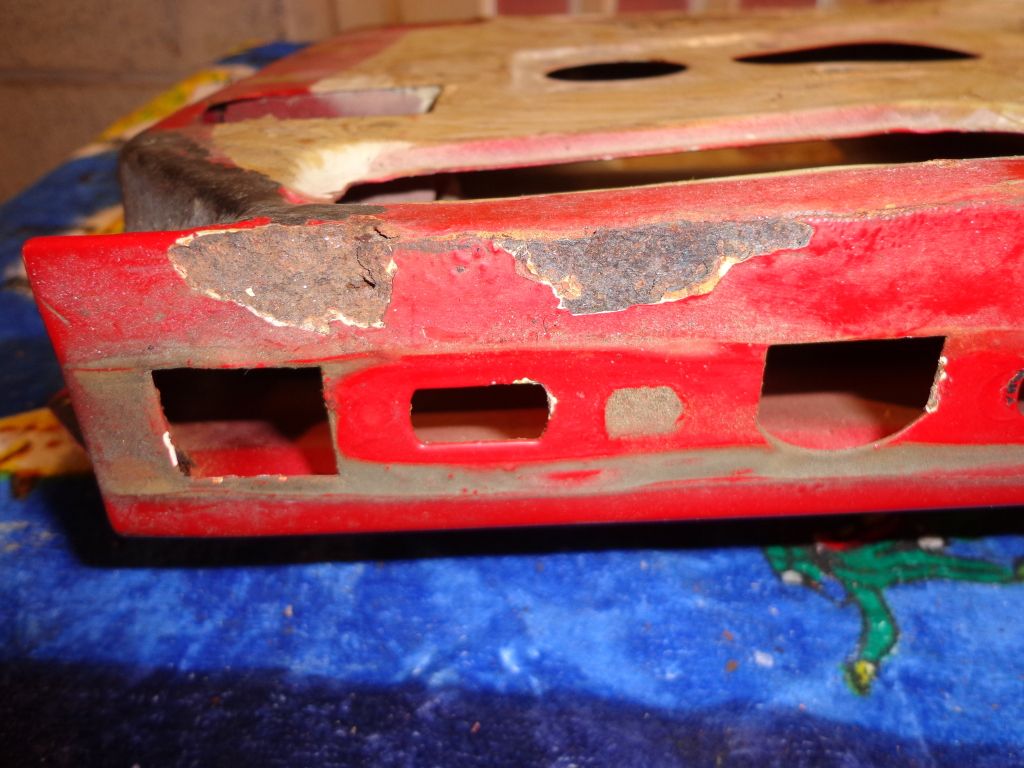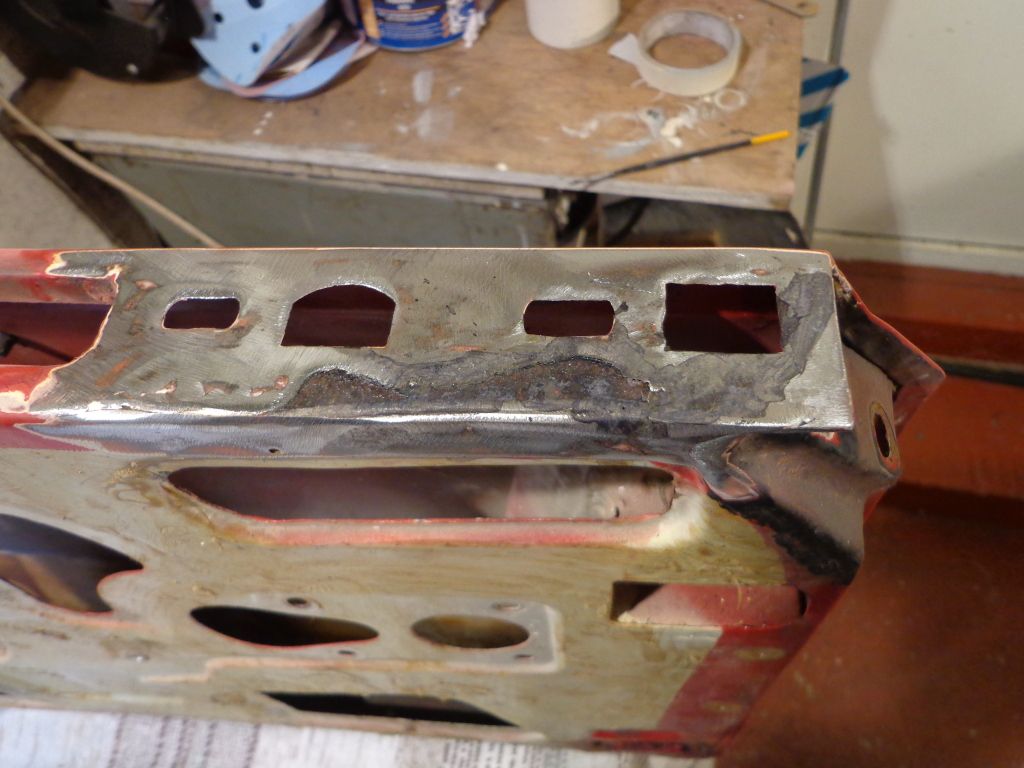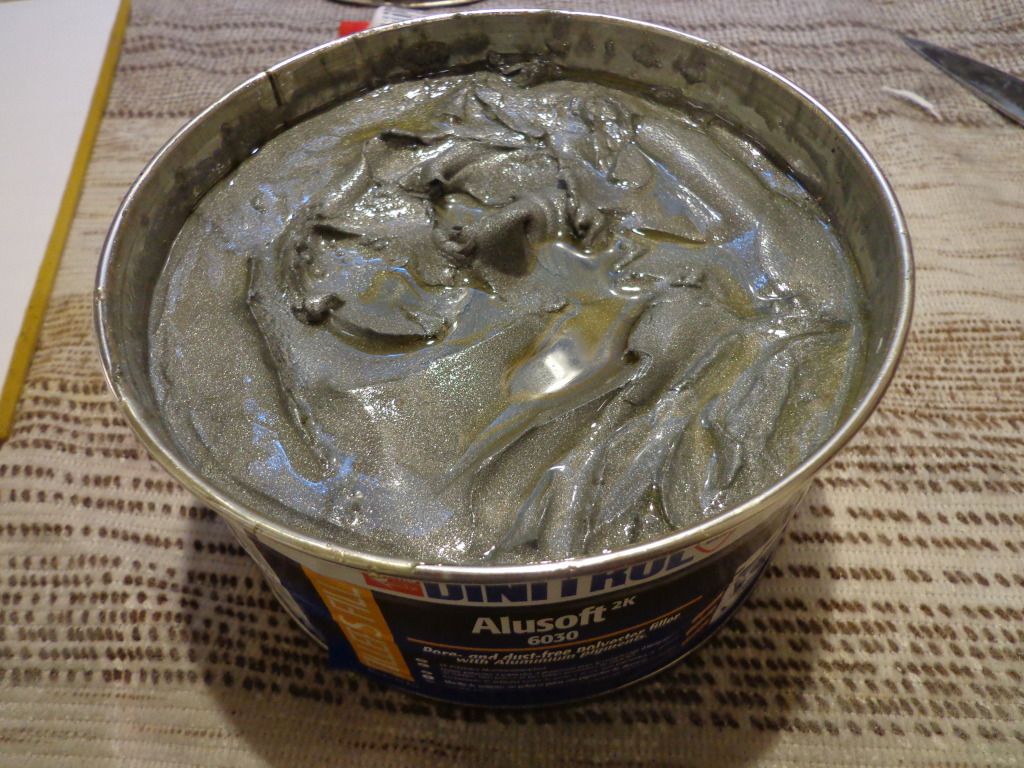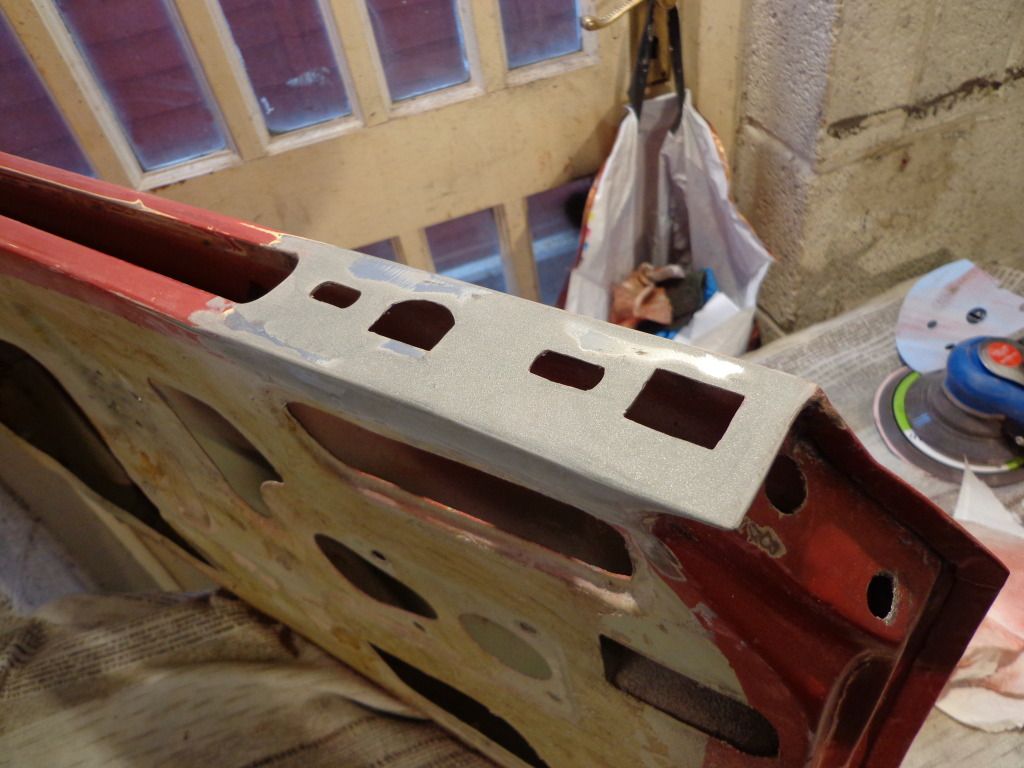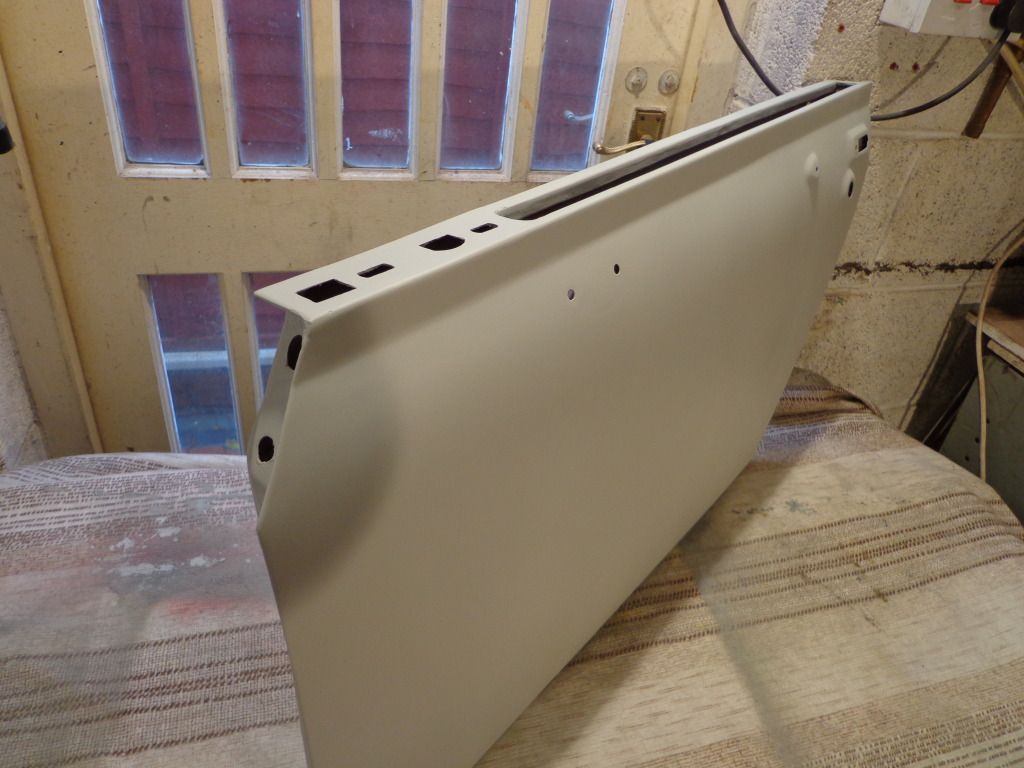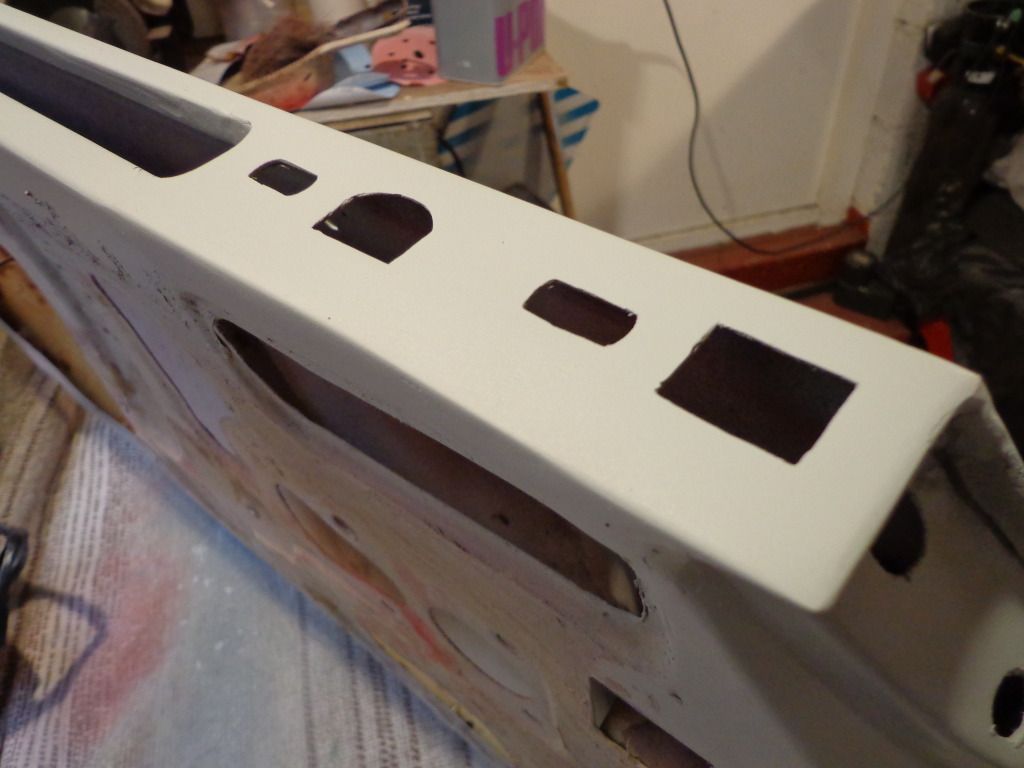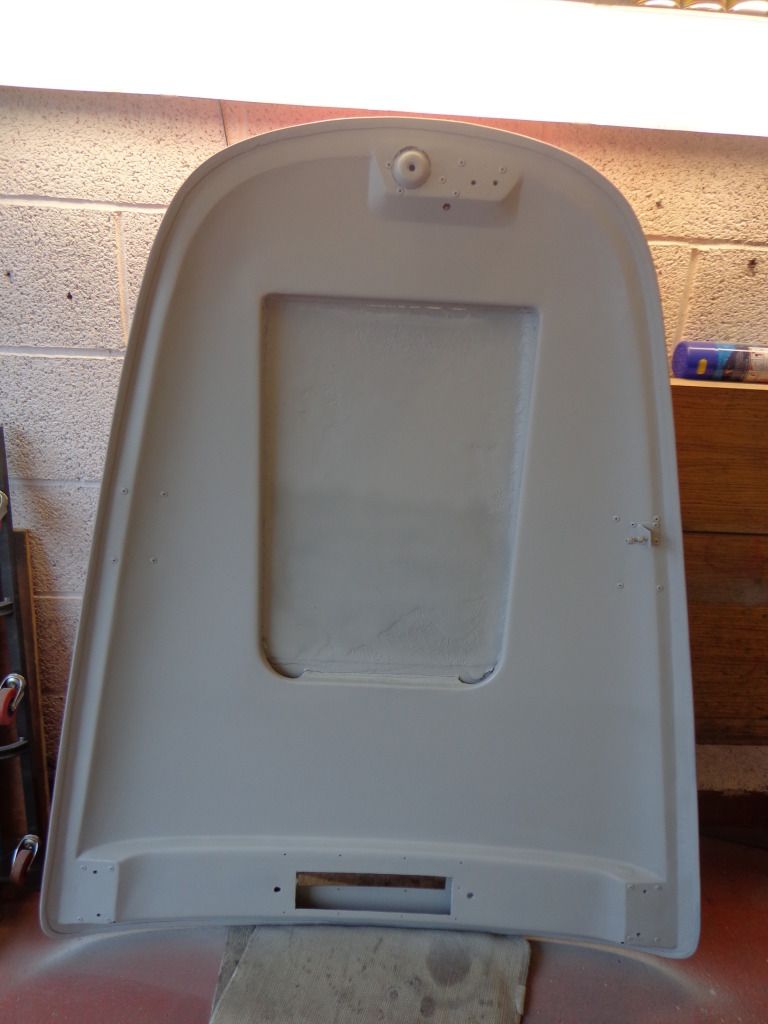Not much done yesterday, Lynne surprised me with a flexi day off so we went to see the new James Bond movie Skyfall and very good it was to.
When I got home I did a bit more work finishing off the rear wing
which I have realised was a bit of a waste of time as when I got the step out to start preparing for primer I found that it is in such a bad condition that it will have some serious work and a fair bit of modification done to it.
I knew the frame work would have to be re-made and have already bought the 40x3mm angle iron for this.
It may not look to bad from this photo but water has got under the top plate and rust has swelled it out of shape.Unfortunately the same trapped water that swelled the steel also deformed the ally and rotted out the step flanges.
It looks ok in this shot but when the rubber is removed you can see the swelling.
Not to mention the corrosion
Both side are the same.
I started out by cutting out the rotten section and was going to make the new frame to suit but just a little wider to take up the difference of the cut out pieces
I have fitted the rear wing in position and used Clico fasteners I bought of ebay quite a while ago as I new I would need them for the fitting of the wings.
These are used in the aircraft industry for holding sections before riveting, you put your 2 sections together then push the Cleco end through the hole and turn the knurled nut. This brings the sliding section up and it tightens on a tapper action locking the panels together, you then just undo and remove when riveting.
I then fitted the step.
This is where it was a waste of time finishing the wing to 800 grit as it will no doubt get plenty of scratches before I'm finished.
I found on fitting that there are a couple of rather large gaps that will need some work, this is maybe where the water got through originally.
You can make it out between the edge of the wing and the body, it is around a 6mm gap which I shall fill.
The other is in the cut out, if I push it to touch then it is out of line at the front so the gap will have to be at the back, a few taps with the hammer will sort this, also the front of the step does not match up with the wing.
So what to do;
Well my idea from the beginning has been when re-fitting the wings to use a rubber or leather wing piping between the bodywork and the wings, both for the look of it and the sealing properties. But I had a problem of where the step comes out from the body, this would mean that I would have to cut the piping and start again after the step, breaking the black line that would run all of the way. So my plan is to cut out the existing aluminium step and have a polished stainless steel cover in it place, running over the new step and bent up both wings, a bit difficult to explain but the idea is to fold the stainless to slide over the frame and cover the step then to cut the outside fold before and after the step section and shape to run up the front and rear wing. This will allow the piping to run all the way along the wing, fitted behind the step and up the other wing in one continuous run.
To this end I am going to cut off the existing aluminium step only leaving the inner door fold.
You can see the dotted line where the cut will be, the door fold will be prepped and primed then riveted and sealed in place to become a fixed part of the body. I shall then clean and fit the front wing leaving a gap where the step will go, I can then make the angle iron frame to the exact measurements and cap flush with a piece of 1.5mm steel plate. Once made I shall have it powder coated to hopefully give it another 26 years.
Everything will become clear, honest.
So I have left it there for the time being and shall carry on in 2 weeks as I am off to work on Monday with a very early flight to Schipol.
see ya then Paul


